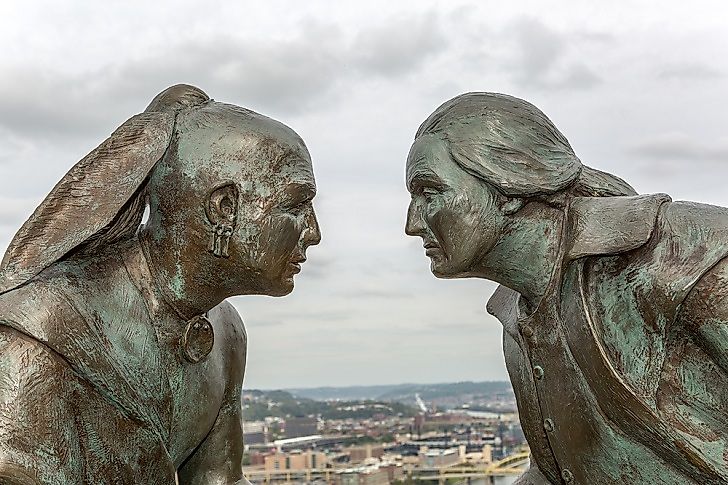The Seneca People

Description
The Seneca peoples were a part of the Six Nations Iroquois Confederacy, and they occupied territory in and around what is now known as New York state. The people have their own Indigenous language that is part of the Iroquoian language family, and the Seneca peoples called themselves Onodowaga, meaning "Great Place in the Hills." They were a rich and powerful nation before the European explorers arrived in a series of events that changed their lives forever over the course of the 1600s. At first, the Iroquois League negotiated with the settlers, and the height of the Seneca tribes was actually in the 17th century. After the American Revolution, however, the nation, which had sided for the most part with the British, lost much of its power.
Architecture
Before modernization, the Seneca peoples lived in settled villages because much of their subsistence relied on agriculture. Their main form of architecture was called the longhouse, which derived its name from the fact that these structures could be up to 100 feet in length. The longhouse's purpose was to house villagers in a multi-family, matriarchal system, and it was made of wooden frames that were covered in sheets of elm bark. The roofs of longhouses were curved, and the buildings were much longer than they were wide. In modern times, longhouses are still maintained to be used for rituals and ceremonial purposes instead of as living spaces. The Seneca peoples of today live in communities or in larger metropolitan areas, residing in modern, Western-style houses or apartment buildings.
Cuisine
Like many Indigenous groups, the Seneca traditionally grew three staple foods together as companion crops. Namely, these were corn, beans, and squash, which they called the "Three Sisters." Women would gather foods like berries and herbs as well, not only for consumption but also for medicinal purposes. The men would traditionally fish and hunt for game meat, such as deer and elk. In addition, they raised certain domesticated fowls, especially turkeys, to supplement their diets. The food was cooked on stone hearths, and common meals included cornbread, soups, and stews. Some of the most important traditional Seneca dishes include ghost bread and corn soup.
Cultural Significance
A unique cultural feature of the Senecas was that their clans were headed by women. Women had ownership over the land and homes, and the head woman in charge of the clan was called the "clan mother." The clan mother would select the chief for their tribe, and she had the ability to remove him from his post if she felt he was not acting in a way that benefited the clan. Women had more power than in many other parts of the world, and as givers of life their approval was necessary before the tribe could go to war. The Seneca people have their own specific music used for social gatherings and dancing. This music was traditionally performed by men and used instruments such as the water drum and cow horn rattle.
Threats
A major threat to the Seneca people is the US government's policies towards Indigenous Americans because they have restricted their land by violating treaties and decreasing the sizes of their reservations throughout the past centuries. There have been many court cases over land disputes, but the Senecas are rarely able to convince the judge that the land is rightfully theirs.
Culturally, another significant threat to the Senecas is the prospective loss of their language. English has taken over as the primary language used by many Senecas in the home, so it could be lost within the next few generations. Their current territories also contain casinos that they have ownership of. As a result, there have been many disputes between the state of New York, the US government authorities, and the Seneca chiefs over the revenue coming out of the casino and how the Seneca government needs to distribute it.











